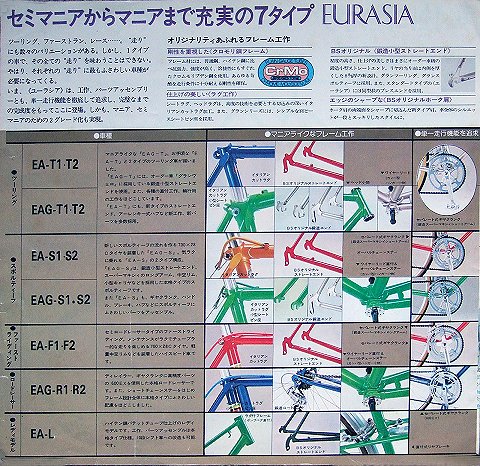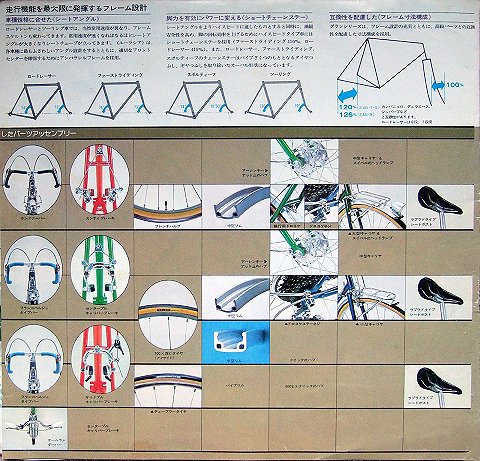|
Eurasia had appeared in 1976.
It was announced as an inferior model of Diamond which was a high class model of Bridgestone.
The front triangle of the frame was made of Cr-Mo, and the front fork was made of high-tension steel.
There were a lot of optional parts such as carrier (front and rear), flashlight, bag, bottle, brake lever pads, toe clips, and straps.
Eurasia was sold as "System-sports bicycle".
Since then, Eurasia went through a number of model changes or added new model in the lineup.
Eurasia had made a great epoch of sports bicycle with other mass-production bicycle in same class, and had fascinated young people who were interesting in sports bicycle.
I used to come across Eurasia bicycle on the road or at youth hostel when I was on the cycling in those days.
Here is the model in 1979.
From the end of 1970s to first of 1980s, I had worked at the bicycle shop in Tokyo as a part-timer after the school.
The main commodity at the shop was city bicycle.
However, several students of high school or university visited to buy Eurasia before spring or summer holiday every year and went long distance touring.
I had composed Eurasia earnestly for them and suggested them a carrier or a bag which were optional parts.
I also told with them about the course plan. Sometime I went one-day trip along with them.
I used to be delight when they stopped by the shop with sunburned face after they got back from the touring. I asked if Eurasia which I composed for them had made trouble.
Catalog was offered by Mr.I.K
|





